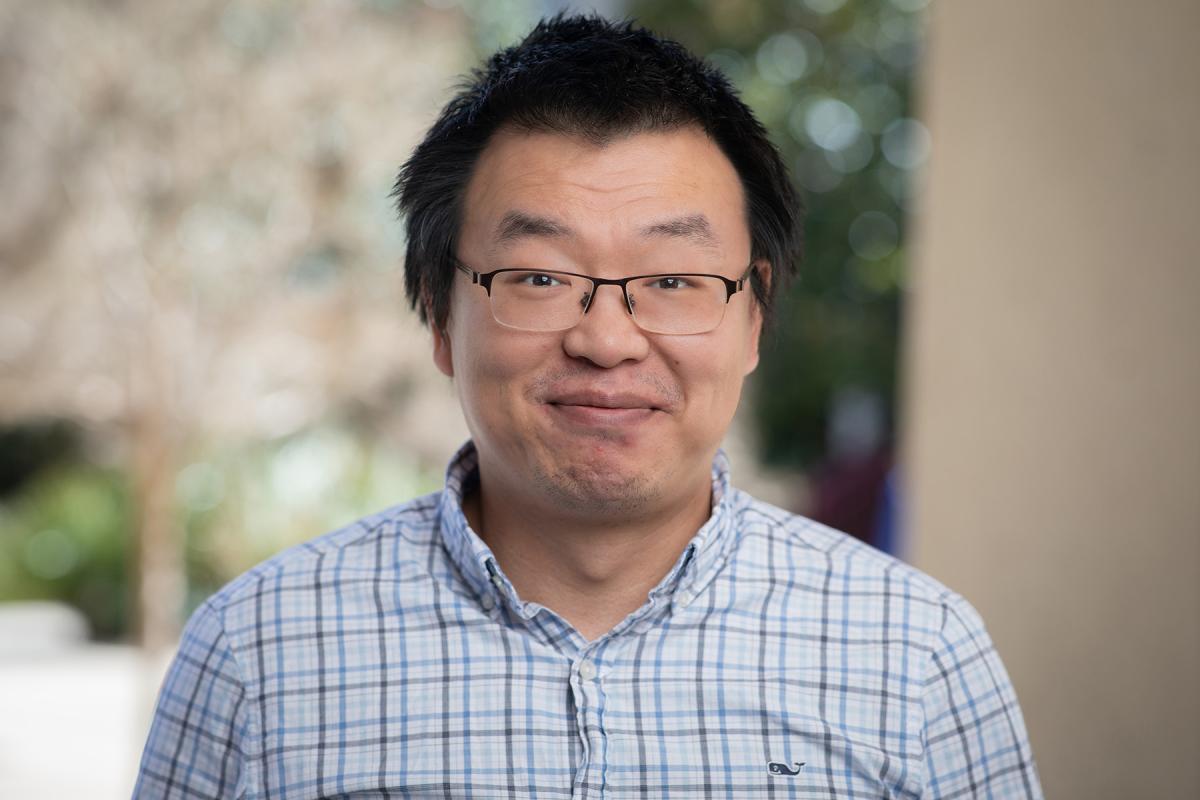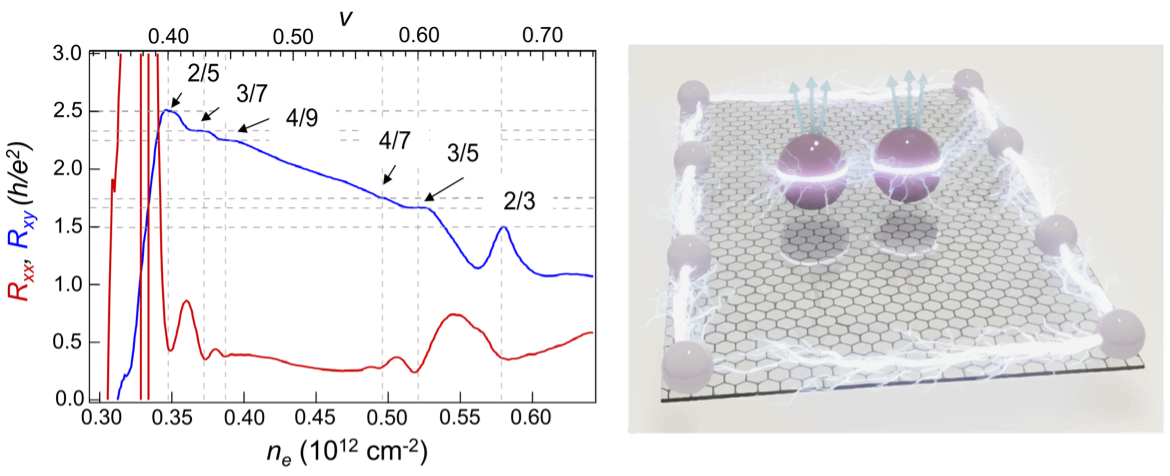Since 1986, the award has annually honored outstanding contributions by young condensed-matter physicists. Lu is the first physicist from FSU to receive the award and is sharing the recognition with Massachusetts Institute of Technology Pappalardo Fellow in Physics Jaiqi Cai for a similar discovery. Both Lu and Cai will visit the University of Illinois next month to present their research.
“This award puts Zhengguang in the company of some of the most recognizable figures in condensed-matter physics,” said Peng Xiong, FSU physics professor and an expert in electronic phenomena in quantum materials. “Although the specific work cited was done at MIT when he was a postdoctoral scholar there, Zhengguang is continuing this line of research and taking it in exciting new directions here at FSU. His hiring has put FSU at the very forefront of one of the most exciting areas of physics today.”
Lu’s work, published in Nature in December 2023, describes a new material system — a five-layer crystalline graphite sandwiched between sheets of boron nitride — that facilitates groundbreaking electronic behavior at low temperatures without a magnetic field. The fractional anomalous Hall state allows electrons to travel along the edges of a structure as fractions of a single charge without any energy loss, making the material a valuable tool in building more powerful electronics and, eventually, quantum computers.
After earning his bachelor’s degree in condensed-matter physics from Nankai University in Tianjin, China, in 2012, Lu began researching quantum materials at the FSU-headquartered National High Magnetic Field Laboratory for his doctoral studies. He earned his doctorate in physics from FSU in 2020 before taking a postdoctoral appointment at MIT. After completing this appointment, Lu returned to FSU in 2024, this time as a faculty member.
“I came back to FSU not only due to the support offered by the department and the university as a whole but also because of the cutting-edge quantum research conducted here,” Lu said. “Physics is a process of finding and discovering beautiful things, and I feel lucky to continue this work here.”
While graphene has been a key material in discovering and studying novel electron behaviors for more than 20 years, the discovery of new fractional states emphasizes how much is unknown about the simplest of materials — even something as common as pencil graphite can exhibit unprecedented quantum properties. For Lu, this is one of the most exciting parts of the field.
“Professor Lu’s work with fractional quantum anomalous Hall effect demonstrates that he is going to be an important leader in the science that will lead to advances in quantum technologies,” said Paul Cottle, Department of Physics chair. “The fact that he earned his Ph.D. right here in FSU’s Department of Physics demonstrates how important FSU and the state of Florida have become to the future of these technologies.”
To learn more about Lu’s work and research conducted in the Department of Physics, visit physics.fsu.edu.



